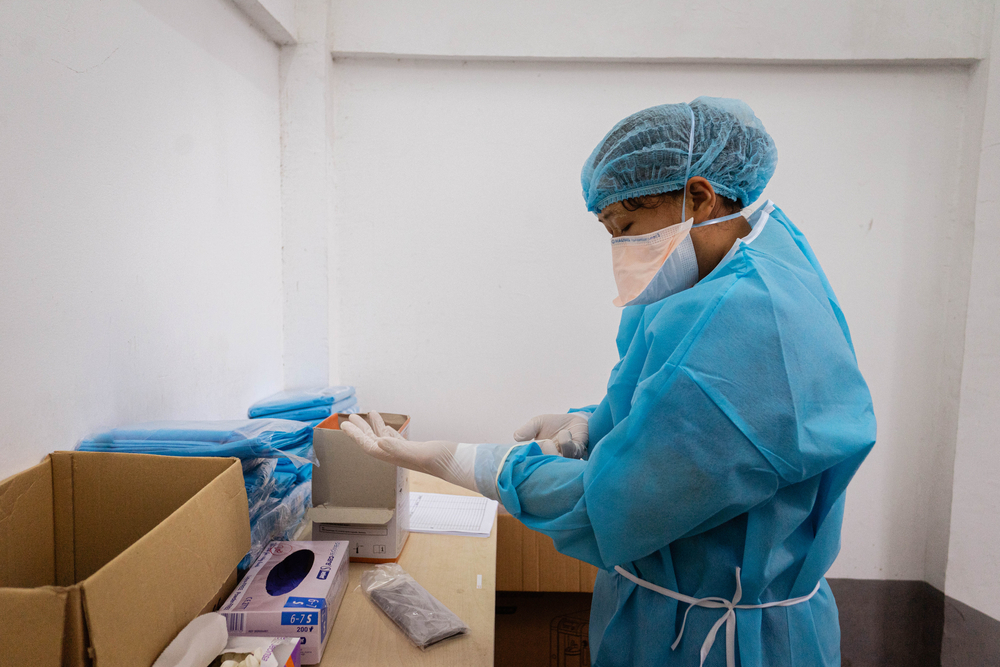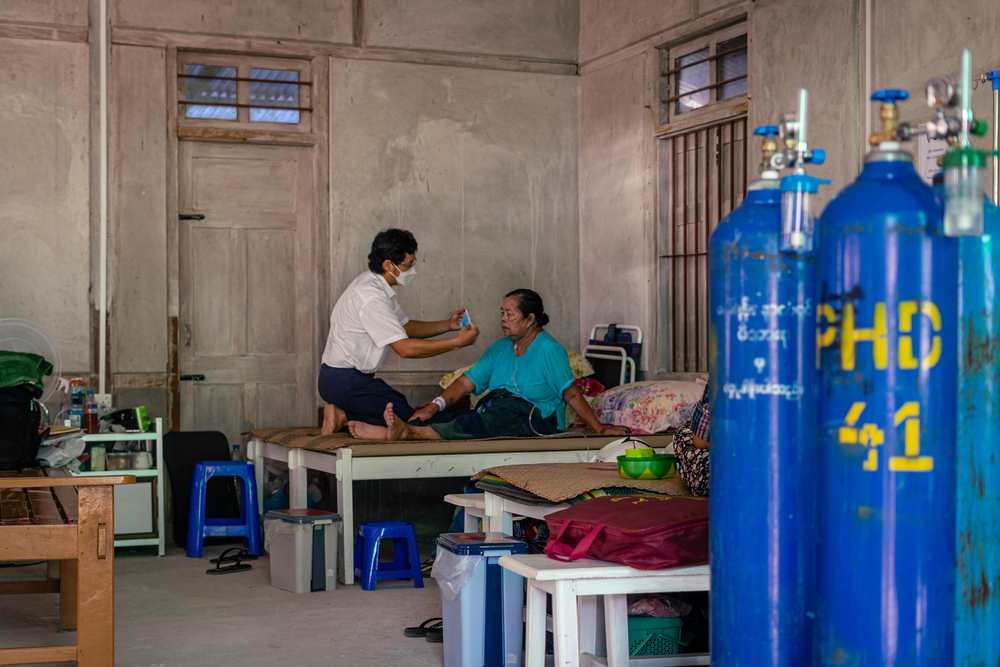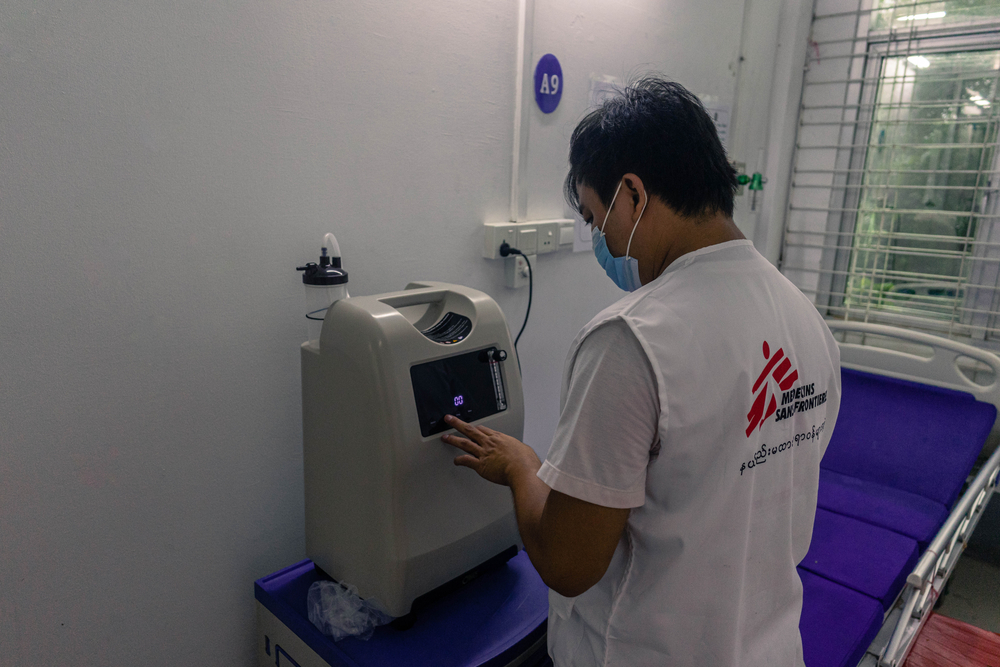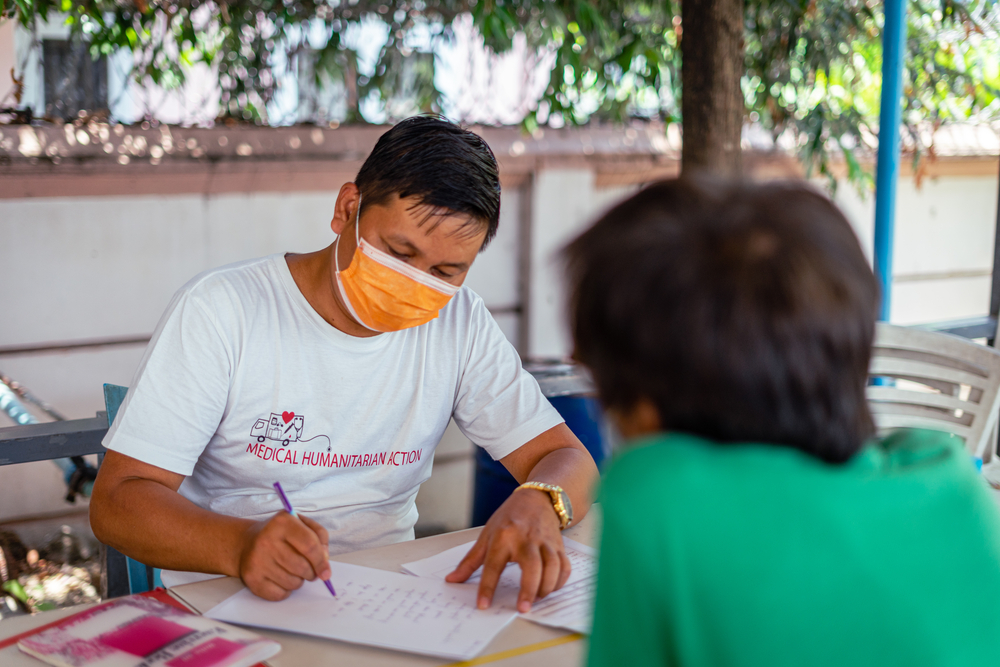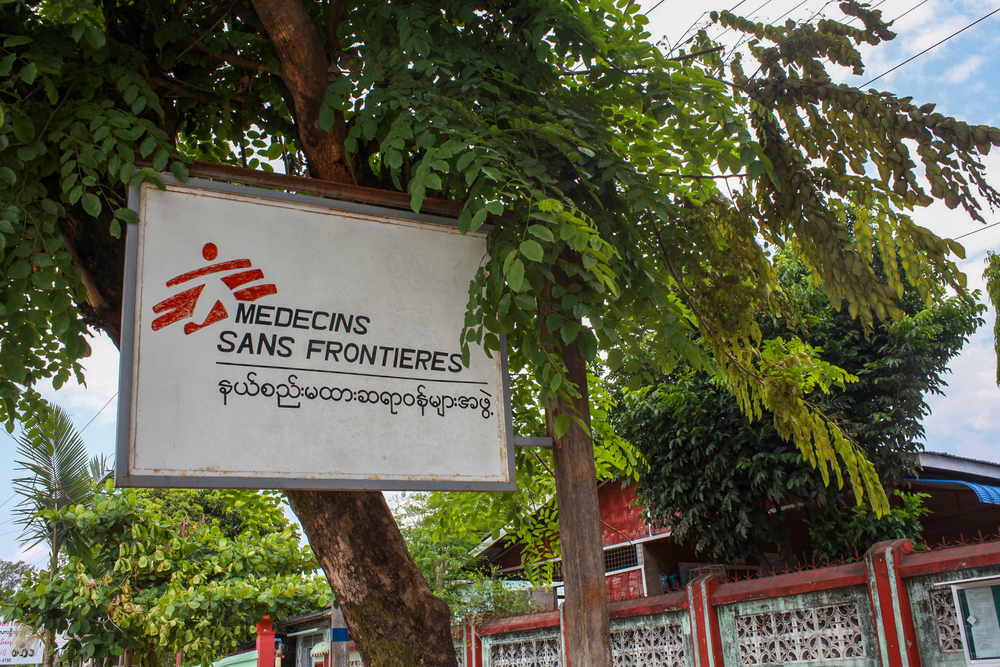When the Myanmar military seized power on 1 February 2021, medical staff walked out of their jobs, spearheading the civil disobedience movement that saw government employees of all stripes go on strike. Most have not returned.
Those on strike who continue to practise in underground clinics risk being attacked and detained by the authorities. At least 28 healthcare professionals have been killed since 1 February, and nearly 90 have been arrested.
Full crematoriums and empty shelves
As COVID-19 infections peaked, beds in hospitals were scarce, and many were left scrambling to source their own supplies of oxygen to administer at home. Routine consultations, surgeries and vaccinations were cancelled while the skeleton medical workforce responded to the outbreak. Panic buying led to empty shelves in pharmacies.
As the death toll rose, crematoriums could not process the bodies fast enough.
Naung Ting, a 34-year-old caregiver at MSF’s treatment centre in Myitkyina, Kachin state, told us how his father-in-law, sick with COVID-19, couldn’t be admitted to either of the hospitals he presented to: the local hospital where he lived, or the major hospital two hours away in Yangon.
“My relatives, who are doctors in America, made a messenger group and they were giving remote treatment for him,” he says. “It meant we had to buy medicine on our own.
“We had to arrange the oxygen and the cylinders. Relatives who had no medical experience of giving injections had to do it. And the medicine was so expensive.”
Demand pushed up the price of a drug to treat blood clots, which are common among COVID-19 patients, to 40,000 kyats (US$22) a pill. He had to take two every day. Naung’s family could only find one oxygen cylinder, and they needed to travel to Yangon and back every other day to refill it.
Ultimately, his father-in-law could not get enough oxygen. He did not survive.
Myanmar’s Ministry of Health recorded nearly 20,000 deaths from COVID-19 to the end of 2021—the fourth highest mortality rate in southeast Asia. But this figure is misleading, as it only includes people who died in hospitals. Thousands more, like Naung’s father-in-law, died in their homes while facilities were full. We will likely never know the real figure, but from our experience responding to epidemics, it is undoubtedly multitudes higher.

